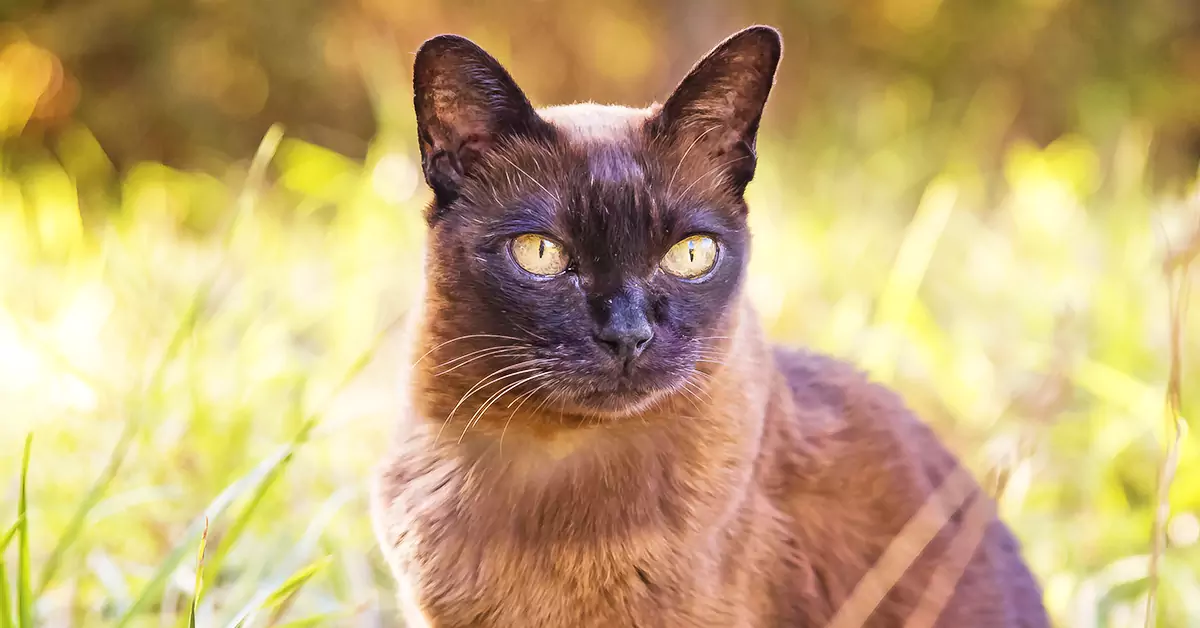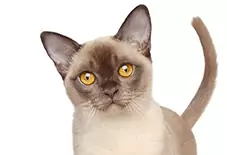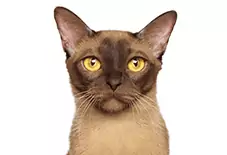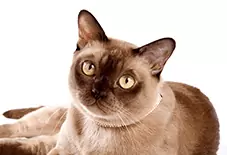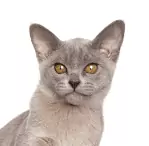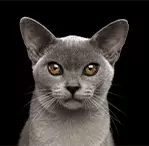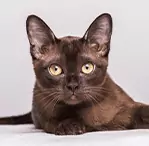
Best Fur Friend

High Kitty I.Q.

Low-Maintenance Looks
If you’re looking for the prrrfect companion for the whole family, I’m the breed for you! We Burmese are known for being one of the friendliest cat breeds around, and I’m gr
eat with kids and cat-friendly pets. I form very strong bonds with my family so I don’t do well left alone for too long. The
humans say I have a
dog-like personality because I’m outgoing, playful, and have big expressive eyes. I’m also a chatterbox, but I have a
sweet soft meow, not a loud bark! I’m athletic and inquisitive so make sure you get me puzzle toys and a cat tree so I can practice my high jump (though I’ll probably end up on your shoulders half the time). As long as I get my energy out, I’m happy to snuggle up and chill in your lap. I’m one of the prettiest kitties around, but lucky for you I only need a weekly
brushing to keep me looking furbulous. Between our low-maintenance looks and charming personalities, it’s no wonder that humans love us as much as we love them!
关于我
Personality
Affectionate
Curious
Playful
Coat Details
Type
Shorthaired
Texture
Glossy and Silky
Colors
Sable, Champagne, Platinum, Blue, Lilac, Fawn, Red, Cream, Chocolate, Cinnamon
Pattern
Tortoiseshell

My Many Looks

My Breed Characteristics

Furbulous Fact
There are actually 2 kinds of Burmese cats – the American Burmese and the European Burmese! We have the same pawesome personality but we look a bit different. The American Burmese comes in 4 solid colors (sable, platinum, champagne, and blue) while the European Burmese comes in lots of different colors and also a tortoiseshell pattern. Americans also have a more rounded head and compact body than Europeans. Many cat registries don’t differentiate between us, but the CFA considers us separate breeds.

As I Grow Up
As you can see, we Burmese age pretty gracefully. Here are a few key milestones in my growth & development to be aware of as I grow up from a kitten to an adult and senior!

History of My Breed
My breed as we are today can all be traced back to one ancestor – a cat named Wong Mau. Wong Mau was a walnut-brown female with dark brown points and came from Burma (which is called Myanmar today). In 1930, a sailor brought Wong Mau to the United States and she was given to Dr. Joseph Thompson. Dr. Thompson was a Siamese cat breeder from San Francisco, and he decided to breed Wong Mau with a seal point Siamese named Tai Mau in order to figure out exactly what breed Wong Mau was. The litter resulted in some kittens that looked more Siamese and some that were brown with dark brown points like Wong Mau. This led Dr. Thompson to believe that Wong Mau was a hybrid of a Siamese and a native cat of Burma. He then bred Wong Mau with one of her brown kittens and produced a litter that included dark brown kittens (the color the humans call sable today) and those were the kittens that the Burmese breeding program was based on. The Cat Fanciers’ Association first recognized us in 1936 but they weren’t happy that many humans were crossbreeding us with Siamese cats to increase our numbers. They took away our purebred status in 1947 and they meant business, so Burmese breeders had to be very strict with their breeding programs in order to get us back in the show ring. Finally, in 1957, the CFA let us back in and by the 1970s we were the third most popular breed in America (behind the Persian and the Siamese). Many different breeds come from the Burmese, including the Bombay, Burmilla, and Tonkinese. Interestingly enough, the Tonkinese (which was recognized by the CFA in 1984) is a Siamese/Burmese cross – the exact thing they kicked us out for – and my ancestor Wong Mau was also a Siamese/Burmese-type mix!

Care Tips
from Dr. Jessica Greenberg, Associate Veterinarian
1
Monitor your Burmese’s weight.
Burmese are prone to weight gain. This can lead to osteoarthritis and other weight-related issues. It’s important to weigh your Burmese every 3-6 months and get your veterinarian to perform a body condition score. Weight loss can be a challenge, so early intervention with an appropriate weight loss diet and exercise is recommended.
2
Watch your Burmese for any signs of diabetes.
Burmese cats are predisposed to diabetes. Signs include weight loss, increased thirst, increased urination, and lethargy. If not treated, this disease can progress to diabetic ketoacidosis, which has the potential to be life threatening. Diabetes can be well controlled in cats with injectable medications or diet, and some can even go into remission.
3
Grooming is a good time to check for other issues.
The Burmese’s coat is easy to manage and requires only a gentle brush once weekly. This is a good opportunity to bond with your Burmese whilst also being able to check their ears, skin, feet, and belly for any signs of illness. If during the groom your cat cries out in pain or moves away, this could be a sign of pain or internal injury.

Training Tips
from Dr. Jessica Greenberg, Associate Veterinarian
